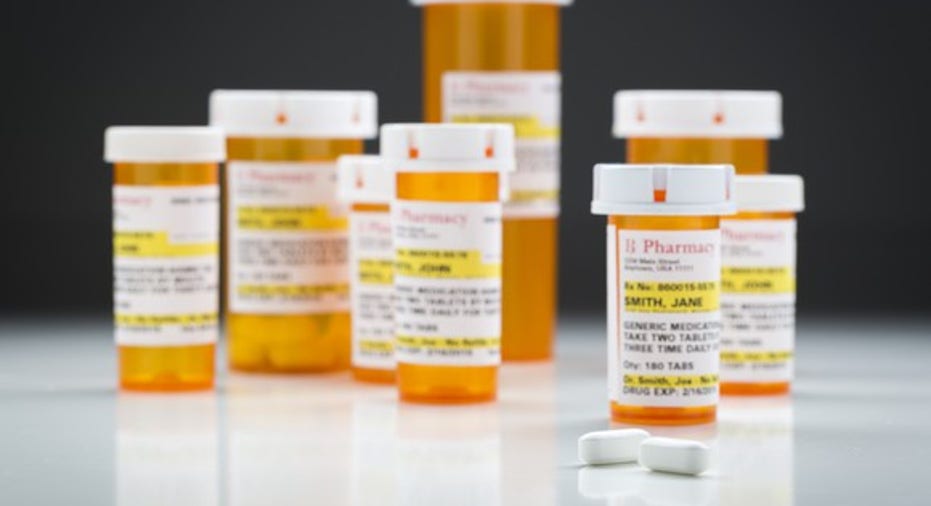3 Things You Really Need to Know About Pfizer's Q3 Results

Investors had gotten used to Pfizer (NYSE: PFE) beating earnings estimates each quarter. But all good things come to an end. The big drugmaker announced its third-quarter results before the market opened on Tuesday. This time, Pfizer didn't satisfy Wall Street's earnings expectations. Here are three things you need to know about the company's third-quarter results.
Image source: Getty Images.
1. Legacy drag
Pfizer's third-quarter revenue increased to $13 billion, reflecting 10% year-over-year operational growth and 8% growth on a reported basis. There is a catch with the prior year comparison, though. Because Pfizer completed its acquisition of Hospira on Sept. 3, 2015, only one month of Hospira operations were included in the company's third-quarter results from last year. Netting out this apples-to-oranges comparison, Pfizer's year-over-year operational revenue growth was only 3%.
One part of Pfizer's business did achieve double-digit percentage revenue growth. Sales for the company's innovative health segment jumped 10% compared to the prior year period, led by rheumatoid arthritis drug Xeljanz and cancer drug Ibrance.
However, Pfizer's legacy business segment dragged down overall performance. Nearly every legacy drug listed in the company's third-quarter report saw lower sales than the prior year period.
2. Higher costs
While Pfizer's revenue was up, even if only by a small percentage, third-quarter earnings fell 38% from the same period in 2015 to $1.32 billion, or $0.21 per diluted share. On an adjusted non-GAAP basis, Pfizer reported earnings of $3.73 billion, or $0.61 per diluted share. That wasn't good enough to meet Wall Street expectations of $0.62 per share.
Higher costs held back earnings growth. Cost of sales soared 39%. There were two primary culprits. First, the inclusion of Hospira operations drove up cost of sales in Pfizer's legacy business. Second, foreign exchange rates caused issues across the board.
Pfizer's research and development costs also increased by 9% as did selling, informational, and administrative expenses. Higher R&D costs were due largely to the company's cancer programs and the inclusion of Hospira operations. Pfizer incurred higher selling, informational, and administrative expenses primarily from Hospira and from increased investments on key drugs including Eliquis, Xeljanz, and Prevnar 13.
3. Cholesterol problems
What was the worst news of all? Pfizer announced that it was discontinuing development of cholesterol drug bococizumab.
Pfizer had hoped to compete for market share among several cholesterol drugs known as PCKS9 inhibitors. Last year,Regeneron (NASDAQ: REGN) and Sanofi (NYSE: SNY) won regulatory approval for PCKS9 inhibitor Praluent with Amgen (NASDAQ: AMGN) following closely behind with approval of Repatha. Because the launches for Praluent and Repatha have been sluggish as they await results from cardiovascular outcomes studies, Pfizer would have at least had a shot against the other drugs. Peak annual sales forbococizumab were projected to reach nearly $2 billion.
That's not going to happen now. And it's already impacting Pfizer financially. The company lowered its full-year 2016 adjusted earnings guidance to a range of $2.38 to $2.43 per share. Previously, the upper end of the guidance range was $2.48 per share.
Bococizumab had been in a late-stage clinical study. While earlier studies had been promising, Pfizer found that the experimental drug wasn't as effective at lowering cholesterol over time. Bococizumab also appeared to have more side effects (immune system responses and injection-site reactions) than Praluent and Repatha.
Pfizer's bad news about its cholesterol drug candidate caused the stock to trade slightly lower in early trading. As you might expect, shares of Amgen, Regeneron, and Sanofi all traded higher now that a potential threat has been removed.
Looking ahead
Despite a disappointing quarter and clinical setback, there's still plenty to like about Pfizer. The company's acquisitions of Anacor and Medivation provide key growth drivers. Pfizer's pipeline includes 33 late-stage clinical programs with another eight awaiting regulatory approval.
The legacy business could continue to weigh down overall results. I would have preferred that Pfizer spin off this business, but the company decided otherwise. There should be good opportunities with several biosimilars, though, includingInflectra, a biosimilar to Remicade, that should begin shipping this month.
Pfizer's dividend can't be overlooked. The yield of 3.76% looks great. While investors might have gotten used to Pfizer beating earnings estimates, they can really get used to steady dividend payments quarter after quarter. I don't see that trend coming to an end anytime soon.
A secret billion-dollar stock opportunity The world's biggest tech company forgot to show you something, but a few Wall Street analysts and the Fool didn't miss a beat: There's a small company that's powering their brand-new gadgets and the coming revolution in technology. And we think its stock price has nearly unlimited room to run for early in-the-know investors! To be one of them, just click here.
Keith Speights has no position in any stocks mentioned. The Motley Fool has no position in any of the stocks mentioned. Try any of our Foolish newsletter services free for 30 days. We Fools may not all hold the same opinions, but we all believe that considering a diverse range of insights makes us better investors. The Motley Fool has a disclosure policy.



















